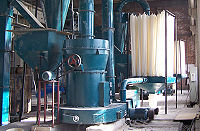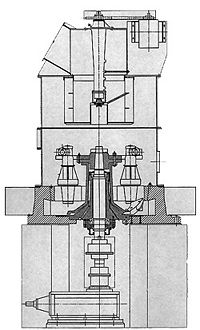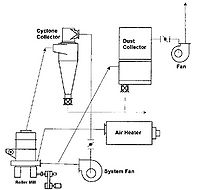Raymond Mills
Raymond Mills are commonly airswept vertical Roller Mills with an integral classification system that simultaneously dries, pulverizes and classifies clays, minerals and manufactured materials that are 5 or less on the Mohs scale. From a feed ranging in size from approximately 10-40mm (½" to 1½"), the roller mill can produce particles ranging from coarse, granular products of approximately 10%R2000 micron (90% minus 10 mesh) to as fine as 0.002%R44 micron (99.998% minus 325 mesh).
They can also be used to prepare feed for systems producing ultra-fine materials, such as Vertical Mills, Ball Mills or Classifier system. The mill provides efficient control of product size with minimal power, resulting in a flexible, cost-effective production.
Operation System
Practically all naturally occurring non-metallic minerals and many manufactured products contain a certain amount of free moisture. At one time it was necessary to dry these products in an independent system. The technique used by Raymond combines drying and pulverizing in the roller mill. This may make it possible to eliminate independent drying equipment reducing capital investment, processing time and handling.
Heated air or waste gas is delivered to the mill return air housing and introduced through air ports to the grinding zone in the mill. The air turbulence and particle size produced during the grinding process are ideal for almost instantaneous evaporation of moisture.
Feed moisture is normally limited to what can be reliably fed into the mill. Typical product moistures are 0.1 to 0.5% by weight.
Video


